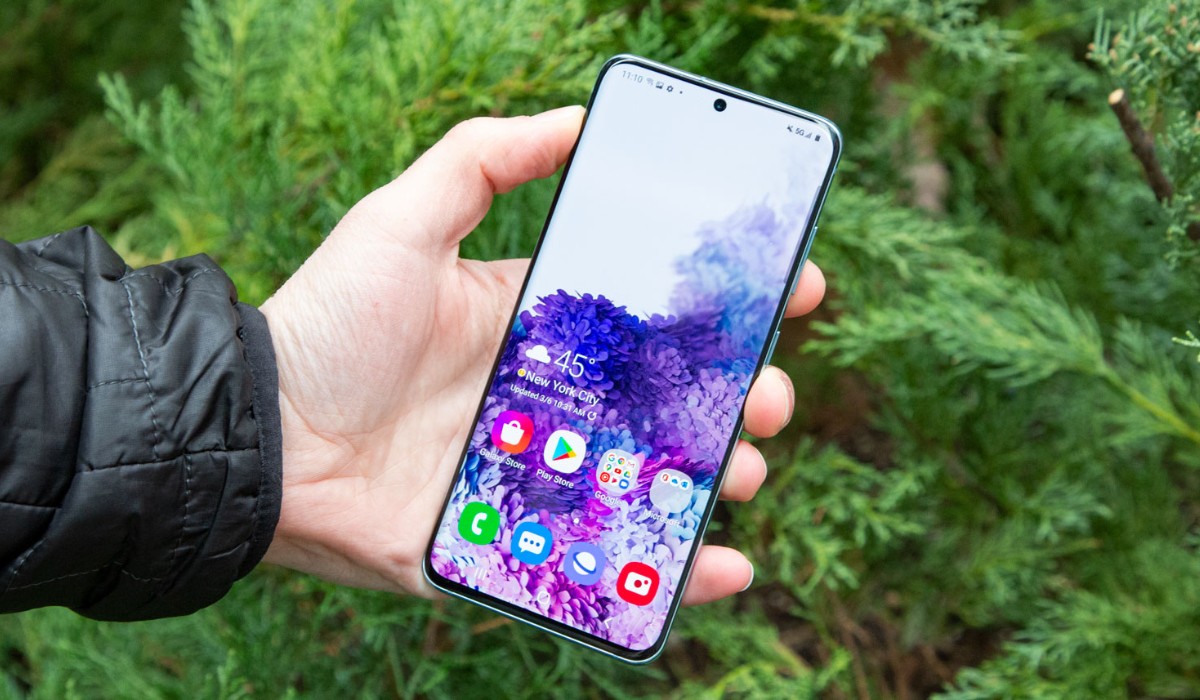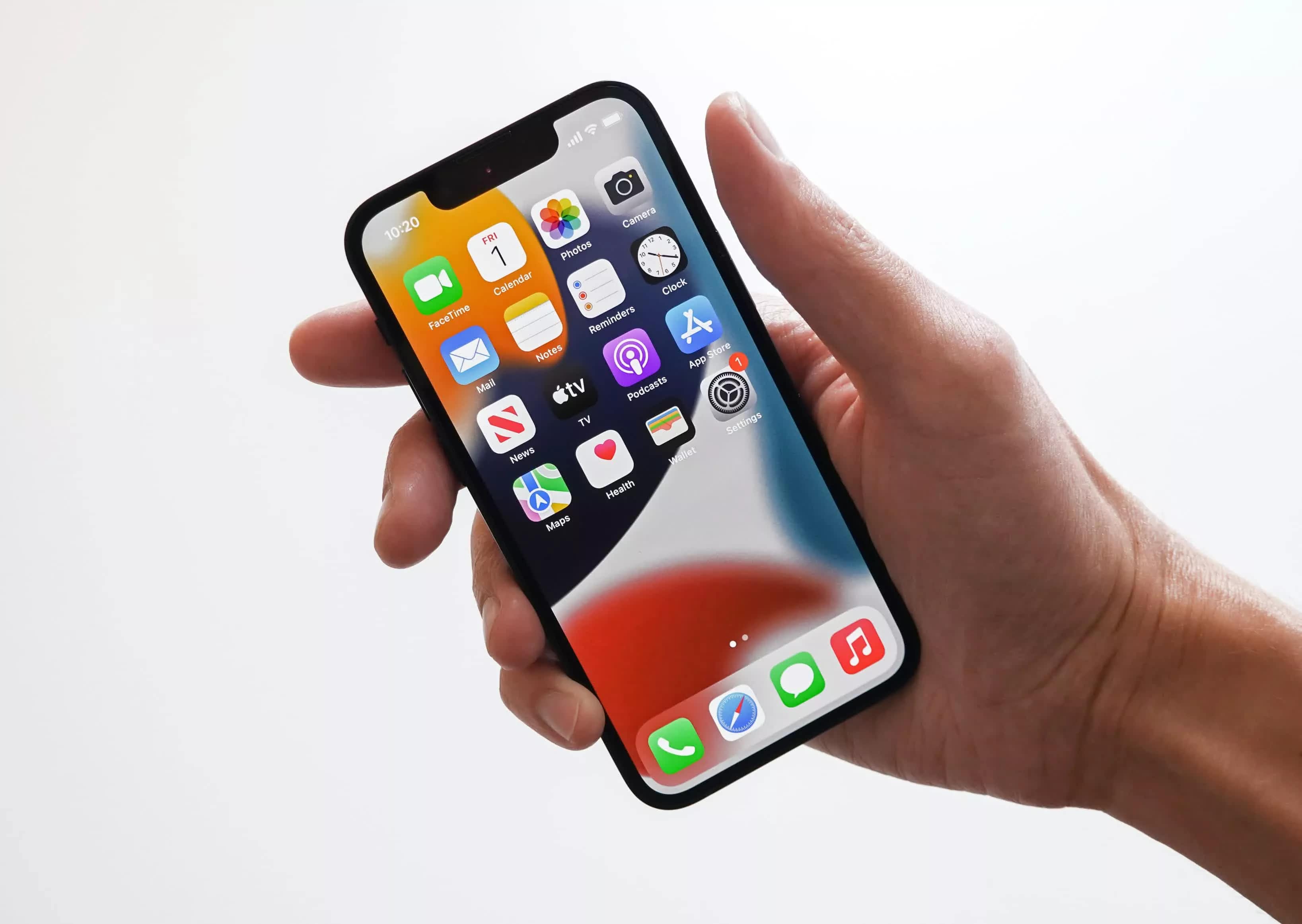Introduction
As technology continues to advance at a rapid pace, the question of when to provide children with their own smartphone becomes increasingly relevant. With smartphones playing a central role in our lives, it’s important to carefully consider the appropriate age at which children should be introduced to this technology. While there is no one-size-fits-all answer, there are several factors to take into account when making this decision.
Smartphones offer numerous benefits, including improved communication, access to information, and educational opportunities. However, they also come with potential risks and concerns, such as overexposure to screens, access to inappropriate content, and online safety threats. Striking the right balance between these advantages and disadvantages is essential in determining the appropriate age for a child to have a smartphone.
In this article, we will explore the various factors that should be considered when deciding when it is appropriate for a child to have a smartphone. These factors include maturity level, responsibility, safety, social interaction, and educational benefits. By examining these aspects, we can better understand the age at which children can benefit most from owning a smartphone.
Factors to Consider
When determining the appropriate age for a child to have a smartphone, several factors should be taken into consideration. These factors will help parents make an informed decision that aligns with their child’s readiness and overall well-being.
1. Maturity Level: Every child develops at their own pace, and it’s important to assess their maturity level before introducing them to a smartphone. A responsible approach includes considering their ability to handle technology responsibly, make appropriate decisions, and understand the potential consequences of their actions.
2. Responsibility: Owning a smartphone comes with certain responsibilities, such as taking care of the device, managing data usage, and adhering to established rules and guidelines. Parents should evaluate whether their child consistently demonstrates responsibility in other areas of their life before entrusting them with a smartphone.
3. Safety: Safety is a paramount concern when it comes to children and smartphones. Parents should educate their children about online safety, privacy settings, and the risks associated with sharing personal information. Additionally, there are parental control features and monitoring tools available to ensure a safe online experience.
4. Social Interaction: Smartphones can be valuable tools for social interaction, enabling children to stay connected with family and friends. However, it’s important to strike a balance and ensure that face-to-face interactions are not compromised. Parents should consider whether their child has already developed strong social skills before introducing them to the world of smartphones.
5. Educational Benefits: Smartphones provide access to a vast amount of educational resources and learning apps. Consider whether your child would benefit from using a smartphone to enhance their educational experiences and expand their knowledge. It’s important to encourage responsible and purposeful use of smartphone technology for educational purposes.
By evaluating these factors, parents can make an informed decision about the appropriate age for their child to have a smartphone. It’s important to remember that the decision may vary from child to child, and what works for one family may not work for another. Open communication between parents and children is vital to set expectations and establish guidelines for smartphone usage.
Maturity Level
Maturity level is a crucial factor to consider when determining the appropriate age for a child to have a smartphone. The ability to handle technology responsibly, make sound decisions, and understand consequences are indicators of a child’s readiness for smartphone ownership.
Each child develops at their own pace, both emotionally and intellectually. Some children may demonstrate a higher level of maturity at an earlier age, while others may require more time to develop the necessary skills and judgment. It’s important for parents to assess their child’s maturity level on an individual basis.
One aspect to consider is the child’s ability to follow instructions and rules. Owning a smartphone comes with responsibilities, including adhering to time limits, respecting privacy settings, and understanding the potential dangers associated with certain online activities. A child who consistently demonstrates responsible behavior in other areas of their life may be more prepared for the privileges and responsibilities that come with smartphone ownership.
Another indicator of maturity is the child’s decision-making abilities. They should be capable of making appropriate choices when presented with various online situations. This includes understanding the importance of keeping personal information private, identifying potential scams or dangers, and distinguishing between reliable and unreliable sources of information.
Furthermore, emotional maturity is equally important. A child needs to be able to manage their emotions, handle conflicts, and resolve disagreements in a responsible and constructive manner. This is crucial since smartphones can provide access to social media and messaging platforms, which may expose them to potential cyberbullying or other negative online interactions. A child who can effectively navigate such situations is better equipped to handle the challenges that can arise in the digital world.
It’s important for parents to engage in open and honest conversations with their child about the responsibilities and potential risks associated with smartphone use. By discussing expectations, setting boundaries, and providing guidance, parents can help their child develop the necessary maturity to make safe and responsible choices when using a smartphone.
Responsibility
Responsibility is a crucial factor to consider when determining the appropriate age for a child to have a smartphone. Owning a smartphone comes with certain responsibilities that children should be able to handle effectively.
Parents should assess whether their child demonstrates responsibility in various aspects of their life. This includes completing tasks and chores, respecting rules and guidelines, and showing accountability for their actions. If a child consistently displays responsible behavior, it may indicate that they are ready for the additional responsibilities that come with owning a smartphone.
One essential aspect of responsibility is taking care of the device. Smartphones are valuable and delicate electronic devices, and children need to understand the importance of handling them with care. This includes keeping the device clean, avoiding physical damage, and ensuring it is charged and maintained properly.
Data usage is another responsibility to consider. Children need to understand how to manage their data allowance responsibly, especially if they are using a limited data plan. This includes monitoring their usage, avoiding excessive downloads or streaming, and being aware of the potential costs associated with exceeding data limits.
Adhering to established guidelines and rules is also a part of being responsible with a smartphone. This may include adhering to age-appropriate content restrictions, adhering to time limits set by parents, and respecting privacy settings. Children should understand the importance of following these rules to ensure a safe and secure online experience.
It’s crucial for parents to take an active role in teaching their child about responsible smartphone use. By setting clear expectations, establishing boundaries, and providing guidance, parents can help their child develop a sense of responsibility and accountability when it comes to smartphone ownership.
Parents may also use tools and features such as parental control apps or monitoring software to help ensure responsible use of smartphones. These tools can provide parents with insights into their child’s smartphone activities and allow them to set restrictions or limits when necessary.
By evaluating their child’s level of responsibility and providing the necessary guidance and support, parents can determine whether their child is ready for the responsibilities that come with owning a smartphone.
Safety
Safety is a paramount concern when it comes to children and smartphones. Parents must prioritize their child’s safety when determining the appropriate age for smartphone ownership and take necessary precautions to mitigate potential risks.
The digital world presents various safety challenges that children may encounter on smartphones, such as cyberbullying, online predators, and exposure to inappropriate content. It’s crucial for parents to educate their children about online safety, establish open lines of communication, and set guidelines to ensure a safe online experience.
One effective strategy is to teach children about the importance of protecting their personal information. They should understand that they should never share sensitive information, such as their full name, address, or phone number, with strangers online. Parents may consider enabling privacy settings on social media platforms and teaching their children to be selective about who they connect with online.
Monitoring their child’s smartphone activities is another safety measure that parents can consider. There are several parental control apps and software available that allow parents to track their child’s online activities, block inappropriate content, and set time limits for usage. These tools can provide parents with peace of mind and ensure that their child is engaging in safe behavior online.
It’s also important to teach children how to navigate potentially harmful situations. This includes recognizing and reporting cyberbullying, understanding the risks associated with downloading files or apps from unknown sources, and being cautious when interacting with strangers on the internet.
In addition to online safety, physical safety should also be considered. Parents should discuss the importance of being aware of their surroundings while using a smartphone, especially in public places. They should be encouraged to avoid using their phone while walking or crossing roads to prevent accidents or distractions.
By educating children about online and physical safety, setting boundaries, and implementing monitoring tools when necessary, parents can ensure a safer smartphone experience for their child.
Social Interaction
Social interaction is an important aspect to consider when determining the appropriate age for a child to have a smartphone. While smartphones can enhance social connections, it’s crucial to strike a balance between digital interactions and face-to-face communication.
Smartphones provide various avenues for social interaction, such as messaging apps, social media platforms, and video calls. These tools can enable children to connect with friends and family, especially those who are geographically distant. It can help foster relationships, share experiences, and stay connected in a digital world.
However, it’s important to ensure that smartphone usage does not replace or hinder real-life social interactions. Face-to-face communication is essential for children’s social development, as it allows them to practice important skills such as listening, empathy, and effective communication.
Parents should consider whether their child has already developed strong social skills before introducing them to a smartphone. If a child struggles with social interactions or spends excessive amounts of time on screens, it may be beneficial to delay smartphone ownership until they have a solid foundation of face-to-face communication skills.
Parents can also encourage balanced smartphone usage by setting time limits and establishing designated “tech-free” zones or times during the day. This ensures that children have opportunities for in-person interactions, physical activities, and other offline pursuits.
Another consideration is the potential impact of social media on a child’s self-esteem and social well-being. Parents should educate their children about the potential pitfalls of social media, such as comparing oneself to others and seeking validation through likes and comments. It’s important to promote a healthy self-image and remind children that social media is not always an accurate reflection of reality.
By promoting a balanced approach to social interaction and setting guidelines for smartphone usage, parents can help their child develop strong social skills and a healthy relationship with technology.
Educational Benefits
Smartphones offer numerous educational benefits, and considering these advantages is important when determining the appropriate age for a child to have their own device.
Access to a smartphone provides children with a wealth of information and learning opportunities at their fingertips. The internet is a vast repository of knowledge, and smartphones allow children to easily search for information, engage in educational apps, and access online libraries and resources.
Learning apps and platforms can help children develop and enhance their academic skills in various subjects. These apps often present information in interactive and engaging ways, making learning enjoyable. For example, there are language-learning apps, math practice games, and science exploration apps that can support a child’s educational journey.
Smartphones can also facilitate communication with teachers and classmates. In case of homework or class updates, students can easily stay connected and seek clarification on assignments or participate in group discussions. Additionally, through educational websites and online courses, children can expand their knowledge beyond what is covered in the classroom.
Furthermore, smartphones can promote digital literacy skills, which are essential for success in the modern world. Children who are familiar with smartphone technology are better prepared to navigate digital platforms and adapt to new technological advancements as they arise.
However, it’s important to encourage responsible and purposeful use of smartphones for educational purposes. Parents should guide their children towards quality educational apps and websites, monitor their usage, and set time limits to ensure a healthy balance between online learning and other activities.
By leveraging the educational benefits of smartphones, parents can enhance their child’s learning experiences both inside and outside of the classroom.
Different Age Groups and Recommendations
The appropriate age for a child to have a smartphone can vary depending on their individual development and circumstances. Here are some general recommendations for different age groups:
1. Age 6-9: At this early age, children are still developing their basic communication and social skills. While access to a smartphone may not be necessary, introducing them to basic digital devices, such as tablets or educational handheld devices, can be beneficial. These devices can offer educational apps, age-appropriate games, and parental controls to ensure a safe and controlled digital experience.
2. Age 10-12: By this age, many children start to express a desire for more independence and responsibility. Introducing a basic smartphone with limited features can be a suitable option, coupled with strict parental controls and supervision. Emphasize responsible smartphone use, set time limits, and monitor their activities to instill good habits from the beginning.
3. Age 13-15: As children enter their teenage years, they may require more connectivity for communication and educational purposes. A smartphone with age-appropriate restrictions and increased access to educational resources can be considered. Encourage open conversations about digital safety, responsible online behavior, and set clear guidelines for appropriate smartphone usage.
4. Age 16-18: Teenagers in this age group may have a greater need for a smartphone due to academic requirements, extracurricular activities, and social connections. It’s important to balance their need for independence with continued guidance and supervision. Gradually easing restrictions, while still maintaining reasonable limits and monitoring, can help teenagers develop responsible smartphone habits in preparation for adulthood.
It’s important to note that these age recommendations are general guidelines, and individual circumstances may vary. Parental assessment of maturity, responsibility, and the specific needs of their child should always be considered when making a decision about smartphone ownership.
Ultimately, the goal is to provide children with the benefits of smartphone technology while promoting safe, responsible, and purposeful usage that aligns with their developmental stage and individual growth.
Age 6-9
For children in the age range of 6 to 9, introducing a smartphone may not be a necessity. At this stage, children are still in the early stages of their development when it comes to communication and social skills. However, it can be beneficial to introduce them to basic digital devices, such as tablets or dedicated educational handheld devices.
These devices can offer a range of educational apps, age-appropriate games, and interactive learning experiences. They can support children in developing foundational skills such as literacy, numeracy, problem-solving, and critical thinking. Additionally, parental control features can be utilized to ensure a safe and controlled digital environment.
While access to a smartphone may not be required at this age, it is important for parents to actively engage with their children during screen time. This can involve joint participation in educational apps, discussions about the content they are engaging with, and setting time limits for usage.
Encouraging physical play, creativity, and social interactions with peers should also be prioritized. Active engagement in outdoor activities, hands-on crafts, and imaginative play fosters important developmental skills and a well-rounded childhood experience. Balancing screen time with other activities is crucial to ensure healthy growth and development.
Parents can use this stage to educate children about responsible technology use, digital etiquette, and healthy habits. Teaching them about appropriate online behavior, the importance of privacy, and the potential risks associated with sharing personal information lays a strong foundation for their future interactions with digital devices.
Ultimately, during this stage, the focus should be on providing children with educational tools, supervised digital experiences, and a balanced approach to technology. As they grow older, they can gradually transition to more advanced devices with increased responsibilities and privileges.
Age 10-12
Between the ages of 10 and 12, children typically begin expressing a growing desire for independence and responsibility. This stage can be an appropriate time to consider introducing a basic smartphone with limited features and capabilities.
A basic smartphone can provide children with a sense of ownership and connectivity while still being guided by parental controls and supervision. These controls can help enforce screen time limits, filter age-appropriate content, and prevent access to potentially harmful or inappropriate websites or apps.
At this age, smartphones can serve as a useful communication tool for staying in touch with family members, friends, or participating in group projects for school. Parents can encourage responsible smartphone use by setting clear guidelines and expectations regarding when and how the device should be used, including appropriate time limits and designated “tech-free” zones or times.
It is essential for parents to have regular conversations with their children about online safety, responsible digital behavior, and the potential risks they may encounter. By fostering open communication, children can learn to make informed decisions and navigate the digital world more confidently.
In addition to communication, smartphones at this age can also provide access to educational resources, interactive learning apps, and tools that support their academic progress. Parents can encourage their children to engage in age-appropriate educational apps and monitor their usage to ensure a healthy balance between entertainment and educational activities.
Overall, introducing a basic smartphone at this age can help children develop essential digital literacy skills, while gradually increasing their independence and responsibility. Parents should continue to monitor their children’s smartphone usage and provide guidance and support as they navigate this new stage in their technological journey.
Age 13-15
Between the ages of 13 and 15, children enter their teenage years and experience significant growth and development. This stage presents an opportunity to consider a wider range of smartphone options that align with their increasing needs and responsibilities.
At this age, teenagers often require more connectivity for communication, academic purposes, and extracurricular activities. A smartphone can serve as a valuable tool for staying organized, accessing educational resources, and connecting with peers and teachers. However, it’s important to strike a balance between their need for independence and continued guidance from parents or guardians.
Parents should continue to establish guidelines and expectations regarding smartphone use. Clear discussions about responsible online behavior, appropriate content consumption, and the implications of sharing personal information are necessary during this stage. Encouraging open communication and trust enables teenagers to make informed decisions and seek guidance when needed.
Teenagers should also be encouraged to explore educational opportunities offered through smartphones. Access to educational apps, online courses, and digital libraries can supplement their learning outside of the traditional classroom setting. Parents can support and monitor their engagement to ensure a productive and balanced use of technology.
While granting more independence, parents may still need to consider parental control options and monitoring tools. Such tools can help maintain a safe digital environment, prevent excessive screen time, and limit exposure to inappropriate content.
Additionally, discussions around digital well-being and mental health should be emphasized. Encourage teenagers to practice healthy device habits, such as taking regular breaks, engaging in physical activities, and fostering quality face-to-face relationships.
Overall, the teenage years are a time of increasing responsibility and independence. By gradually expanding smartphone privileges and fostering responsible use, parents can help teenagers develop necessary digital skills while instilling values that support their overall well-being.
Age 16-18
Between the ages of 16 and 18, teenagers are entering adulthood and experiencing further maturity, responsibility, and independence. As they prepare for higher education or the workforce, owning a smartphone becomes increasingly essential for communication, organization, and accessing educational resources.
At this stage, teenagers may require smartphones with more advanced features and capabilities to meet their evolving needs. As parents, it’s important to continue setting guidelines and expectations while gradually granting more autonomy and freedom in smartphone usage.
With increased independence, teenagers should be encouraged to take increasing ownership of their smartphone usage. This includes managing their own data plans, understanding the costs associated with excess usage, and being responsible for the physical care of their device.
Parents can support teenagers in using smartphones for educational purposes by identifying relevant apps and resources that align with their academic pursuits. Encouraging critical thinking, problem-solving, and digital literacy skills through the use of educational apps and online resources can help teenagers thrive academically.
While granting more freedom, parents should continue to have open conversations about responsible digital behavior, online safety, and the importance of maintaining a healthy balance between virtual interactions and face-to-face connections.
With a smartphone, teenagers gain more opportunities for social engagement and networking. Encourage them to utilize social media platforms mindfully and responsibly, being aware of the potential risks and actively managing their privacy and online presence.
Parents may gradually reduce the use of parental control features, trusting that teenagers have developed the necessary skills to navigate the digital landscape responsibly. However, periodic check-ins and open lines of communication should still remain essential to address any concerns or challenges that may arise.
Ultimately, the teenage years serve as a significant period of growth and development. By gradually expanding privileges, fostering responsible smartphone usage, and maintaining open communication, parents can empower teenagers to become responsible digital citizens as they navigate the transition to adulthood.
Conclusion
Determining the appropriate age for a child to have a smartphone is a decision that requires careful consideration of various factors. Maturity level, responsibility, safety, social interaction, and educational benefits all play a significant role in making an informed choice.
While there is no one-size-fits-all answer, it is important for parents to assess their child’s individual development and readiness. Engaging in open conversations about technology, setting clear guidelines, and providing guidance are essential in navigating this digital age.
For children between the ages of 6 and 9, introducing basic digital devices can offer educational opportunities while prioritizing physical play and face-to-face interactions. As they enter the age range of 10 to 12, a basic smartphone with limited features and parental controls can be considered, adhering to specified guidelines.
From ages 13 to 15, teenagers may require more connectivity, and smartphones with increased functionality can support their academic and social needs. Lastly, for teenagers between 16 and 18, smartphones become essential tools as they prepare for adulthood, necessitating a balance between independence and ongoing guidance.
Throughout each stage, parents must prioritize safety, promote responsible digital behavior, and encourage a healthy balance between online and offline activities. Monitoring tools and parental controls can aid in maintaining a safe and controlled environment.
Ultimately, the decision about when to give a child a smartphone should be based on a comprehensive evaluation of their individual development, maturity, and needs. By considering the factors discussed, parents can make an informed decision that facilitates their child’s growth, education, and overall well-being in the digital age.

























